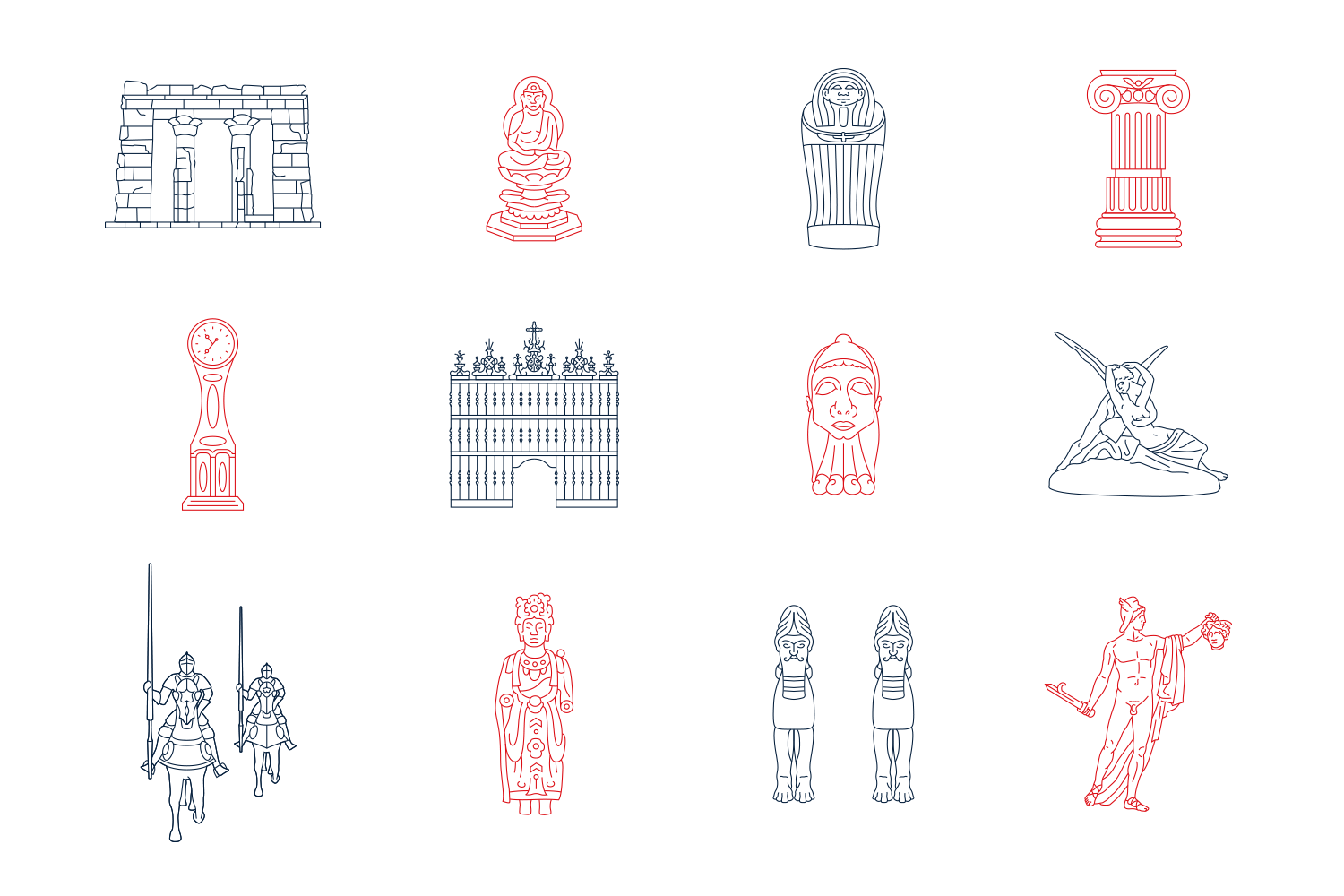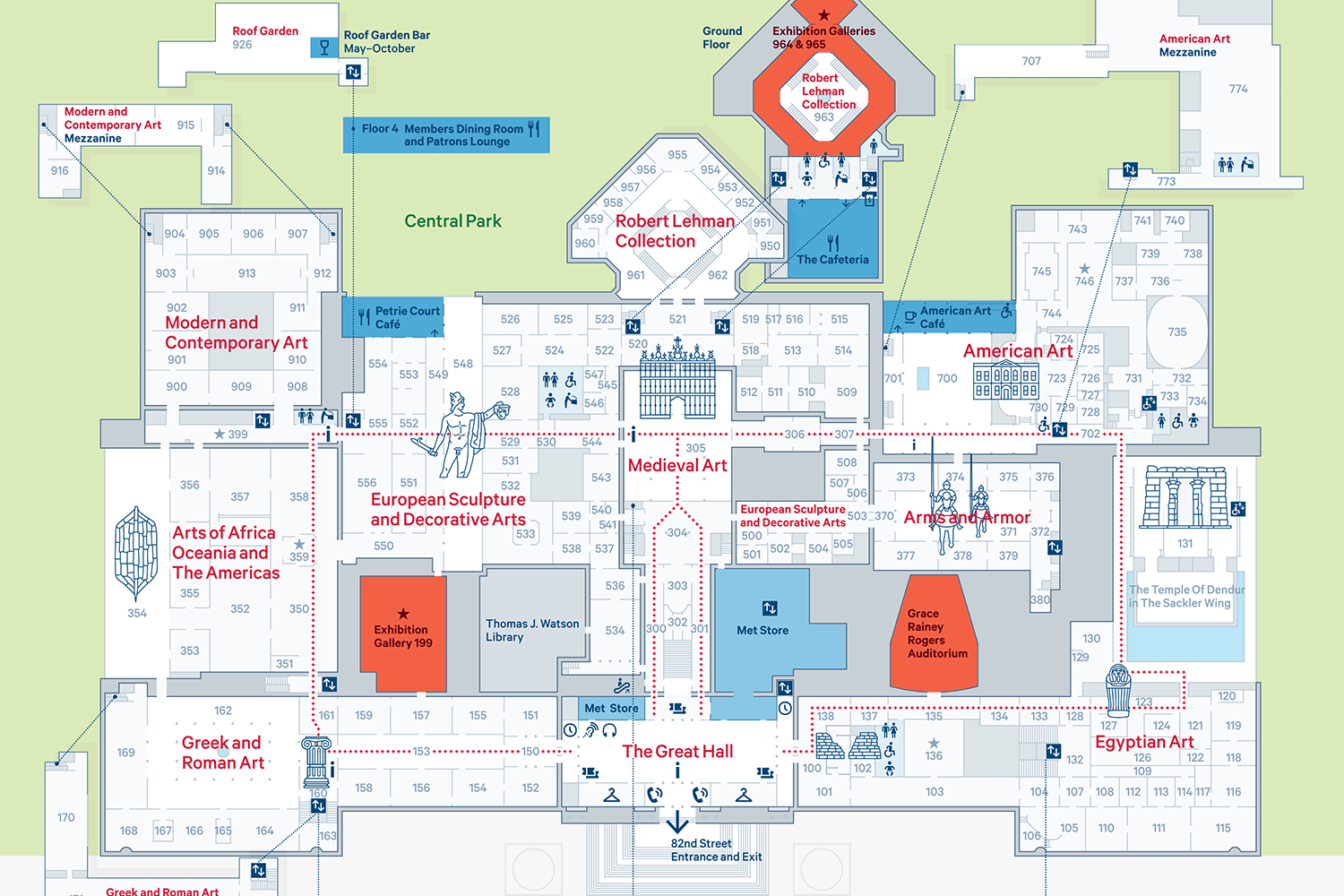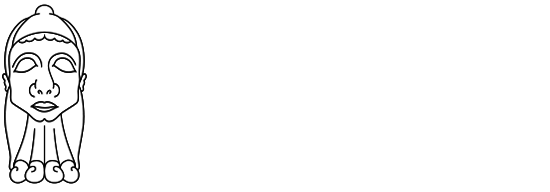The Metropolitan Museum of Art (the Met) welcomes seven million visitors a year. Being one of the world’s largest museums, these visitors have around 250 exhibition rooms to explore.
As a result, the Met is a very busy and complex space to navigate. Unsurprisingly, research showed how little visitors could see in one visit.
Our strategy reimagined the wayfinding experience in order to increase visitor confidence to explore the Met’s hidden treasures. We used the visual design of the map to increase the accessibility of art in the museum and give visitors a tool to confidently explore the collections. Our digital map was a first for the museum and sets a standard for a scalable system that connects to the living database of art and can be updated to reflect changes to the museum.
With immense attention to detail, we created visual and typographic systems for the complex information and content of the museum – including a set of variable illustrations and a new icon set based on the Met's own typeface. Our solutions are now used by upwards of 7 million people a year and are support 11 different languages.
3.5 million
Yearly users of the printed map
1 million
Yearly users of the digital map
Our process started with developing a deep understanding of the physical space, the needs of our client and, most importantly, the museum visitors
The museum had important goals to achieve with this project, centered around making their collections more discoverable and usable a whole. Art is for everyone and so designing an inclusive and accessible solution was of utmost importance to them. We focussed on developing a deep understanding of the existing challenges, as well as the needs of the many visitors.
THE MET'S NEEDS

QUOTES FROM MUSEUM VISITORS








In addition to extensive qualitative research with visitors we undertood quantitative analysis of how people moved around high-traffic areas
This gave us an objective view of the realities on the ground and enabled us to model changes to space layout and design before putting them in place.




We gave the Met a map that works at any scale in print and signage, and brings to life the building and collection within
Available in 11 languages – including Arabic, Chinese and Russian – our map maximises every millimeter of the canvasto create an accurate depiction of the built environment. We also added a central route through each collection that aides primary navigation and we even managed to depict dark and light spaces on the map; something that is very evident as you move through the physical environment.



Our digital map goes even further; connecting the building with the museum's database and providing routing for visitors
We delivered a bespoke, zoomable map of both the Met 5th avenue (the main museum) and the Met Cloisters (a separate site specialising in Renaissance Art). With the digital version, users can access relevant information about a collection, gallery or artefact. It also provides routing between two points, including accessible or walking route options. This makes planning a visit much easier, in addition to supporting the in-gallery experience.








Incredible care and attention went into the design detail of our work for the Met
We designed a bespoke icon set to pair with their newly-commissioned typeface. We also created a set of illustrations depicting landmark works which were prominent based on their scale and ease of recognition, making them useful aides for navigating the museum.
Both our icons and illustrations were variable, meaning they were drawn with differing levels of detail depending on their scale - ensuring they retained their legibility equally from the printed map to the large signage in situ and even the zoomable levels in the digital map.
Illustrations of landmark objects in the space help orientate visitors and aid navigation in the building. Most were selected based on their visual prominence from a distance and usefulness in wayfinding. We also had to finely balance typographic sizes, weights and layout to ensure legibility as well as to accommodate the 11 languages of translation – including alphabets that read in different directions such as Arabic or Chinese.



Ronan Kelly
Currently:
Product Designer at Sweep
I have spent 10 years helping companies of all sizes to design solutions for complex problems. To do this, I combine user centered product and graphic design practices that create engaging, successful digital products.


